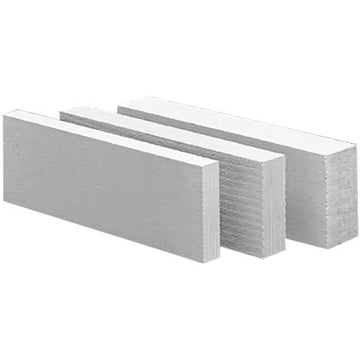
If you are building or renovating a house, it is important to choose the right materials. One of the choices you can face is the use of aerated concrete blocks and pure insulation. In this article we will discuss what aerated concrete blocks are, why they are popular and whether it is wise to fill them with insulation pur.
What are aerated concrete blocks?
Aerated concrete blocks, also known as aerated concrete blocks or Ytong blocks, are made of cement, sand and water. The special thing about these blocks is that they are hollow inside, making them lighter and better insulated than traditional bricks. As a result, aerated concrete blocks have a high thermal insulation value.
Another advantage of aerated concrete blocks is that they are easy to work with. You can easily saw or drill them to conceal piping, for example. In addition, aerated concrete blocks have good sound insulation, which reduces noise nuisance.
Why are aerated concrete blocks popular?
Aerated concrete blocks are becoming increasingly popular in the construction industry due to their many advantages. Firstly, they are lighter than traditional bricks, which simplifies and speeds up the construction process. In addition, they have a high insulation value, which means they contribute to an energy-efficient home.
In addition, aerated concrete blocks are fire-resistant. This means that they are non-flammable and contribute to the safety of a building. Aerated concrete blocks also have a positive influence on the indoor climate, because they have a moisture-regulating effect.
Is it wise to fill aerated concrete blocks with insulation pur?
A frequently asked question is whether it is wise to fill aerated concrete blocks with insulation pur. Insulation pur, also known as polyurethane foam, is a material that is often used for thermal insulation. It has good insulating properties and can provide optimum heat and sound insulation.
Filling aerated concrete blocks with insulation pur can have several advantages. First of all, it provides extra insulation, reducing energy loss through the walls. This contributes to a lower energy bill.
In addition, insulation pur helps to prevent thermal bridges. A thermal bridge is a place where heat can easily escape, for example at the connection of various building components. By filling aerated concrete blocks with insulation pur, the risk of thermal bridges is reduced.
In addition, filling with insulation pur provides better sound insulation. Sound vibrations are absorbed by the foam, reducing noise pollution.
However, there are also some things to keep in mind when using insulation pur. Firstly, it is important to determine the correct thickness of the insulation layer. This depends on factors such as the desired insulation value and the available space in the wall.
You must also ensure that there is sufficient ventilation in the wall. Aerated concrete blocks naturally have good vapor permeability, but this can be reduced by filling them with insulation pur. It is therefore important to ensure good air circulation to prevent moisture problems.
Conclusion
Aerated concrete blocks are popular in the construction industry due to their many advantages, including lightness, thermal and sound insulation and fire resistance. Filling aerated concrete blocks with insulation pur can provide extra insulation, prevent thermal bridges and improve sound insulation. However, it is important to take into account factors such as the correct thickness of the insulation layer and adequate ventilation.
If you are considering filling aerated concrete blocks with insulation pur, it is advisable to seek advice from a professional. They can help you make the right choices and ensure optimal insulation of your home.



